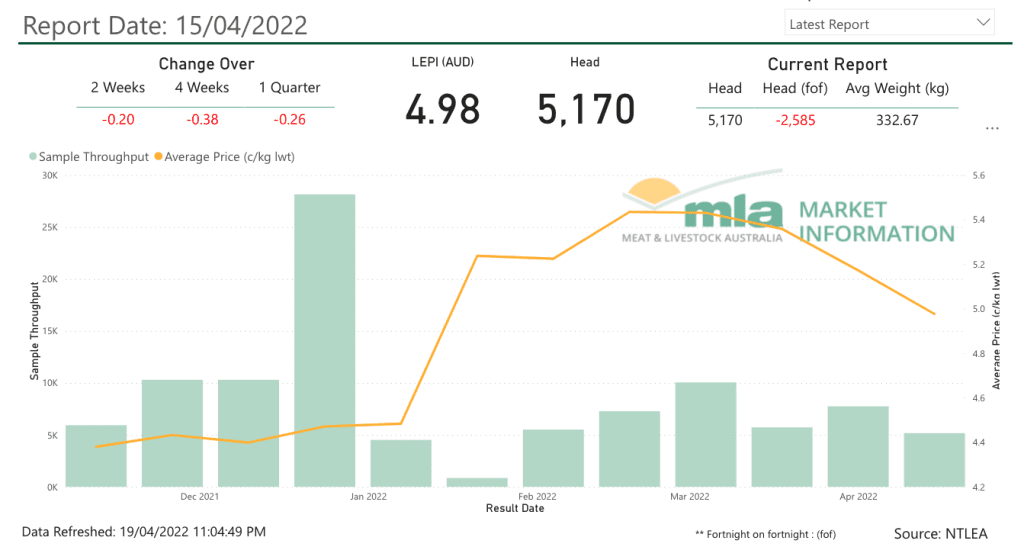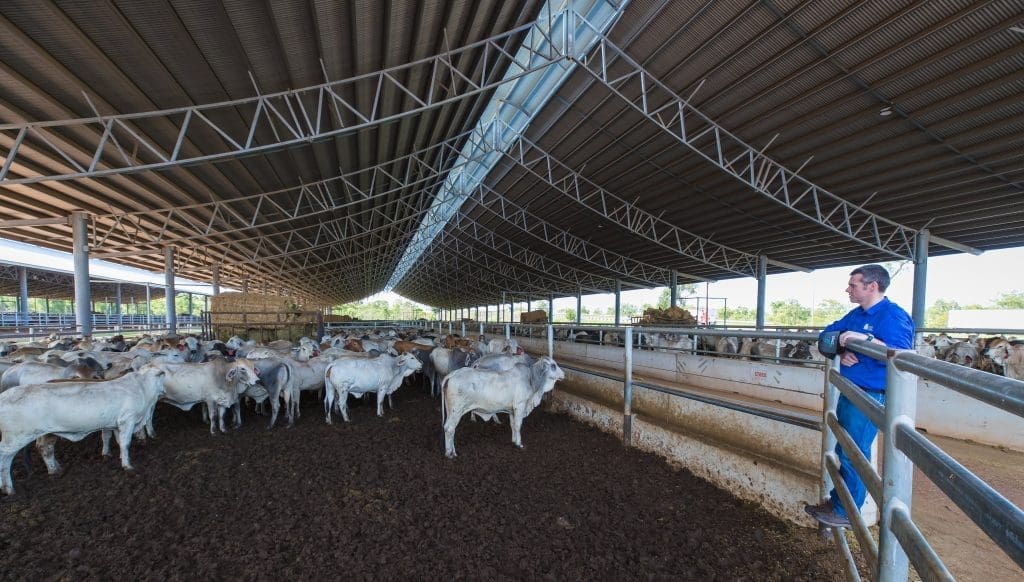FOR the first time the northern livestock export industry now has a formal market barometer with the official launch today of the Live Export Price Indicator by Meat and Livestock Australia’s National Livestock reporting service.
The LEPI is a 14-day rolling average of the price paid for 280–380kg liveweight male feeder weight cattle from northern Australia being exported to Indonesia via the Port of Darwin.
The Northern Territory accounts for around 10 percent of the total national cattle herd but has not previously had its own dedicated price indicator in the NLRS’s stable of market reporting categories.
The LEPI has been developed by MLA NLRS in conjunction with the Northern Territory Livestock Exporters Association (NTLEA) over the past year, in consultation with producer representatives including the Northern Territory Cattlemen’s Association and the Northern Australia Beef Research Council.
The price will be reported in cents per kilogram liveweight basis in Australian Dollar terms, the same way cattle are transacted in the live export market.
The indicator will be reported on a fortnightly retrospective basis and released every second Tuesday – meaning the data shown in the indicator will be for the previous fortnight that has just occurred.
Going live today, the indicator is currently sitting at a price of AUD$4.98c/kg lwt, with 5170 Indonesian feeder males passing through the indicator in the fortnight to Friday 15 April.

To view the LEPI dashboard on the MLA website click here
That level represents a decline of 20c on the previous fortnight, and a softening of 45c from its height of 5.43c/kg lwt in early March.
The LEPI is based on a dataset of prices reported to the NTLEA by member exporters of the average c/kg lwt prices of consignments containing animals exported from Darwin to Indonesian feedlot customers within the previous fortnight of castrated (steers) and entire (bulls) weigh within a range of 280–380kg with muscle scores estimated to be C and all fat scores included.
MLA Managing Director, Jason Strong, said the live export industry played a pivotal role in the livestock sector in Northern Australia.
“The Northern Territory currently accounts for about 10 percent of the total national cattle herd, so it’s important that the live export industry has a measurable pricing indicator made available by an independent source rather than rely on anecdotal information,” Mr Strong said.
“The new LEPI will provide relevant, timely and independent information to support the live export industry to make more informed business decisions through connected data.
“Critical to the process was the consultation with livestock exporters who contribute their data to the Northern Territory Livestock Exporters Association (NTLEA) and provided regular updates on the indicator’s performance, its accessibility and accuracy.”
NTLEA CEO Tom Dawkins said he was grateful for exporter and producer input over the past 12 months in building the indicator with MLA.
 “The LEPI represents a new benchmark in data-driven market reporting for northern export supply chains and obviously exporters are uniquely placed to report price data for the live trade.
“The LEPI represents a new benchmark in data-driven market reporting for northern export supply chains and obviously exporters are uniquely placed to report price data for the live trade.
“Accurate market reporting is very much in the exporters’ interest, given they are actively buying and selling cattle on a daily basis and maintain relationships with producers here in Australia and importers in Indonesia.”
“The NTLEA represents all exporters using the Darwin port, but our membership also includes a wide range of non-exporter supply chain operators, such as large-scale cattle producers who supply the trade and businesses with significant feedlot interests in Indonesia. In that sense, we are very much interested in the accuracy and reliability of any market reporting in the public sphere.”
“Everyone in the supply chain, from the producer through to our customers in Indonesia, supports timely and reliable market price reporting. Given the heightened interest in our market due to unheralded prices and reduced supplies, MLA is to be commended for investing in this initiative.”
Mr Dawkins also thanked former NTLEA CEO Will Evans for his early work with MLA in conceiving the LEPI.
“Will really got the ball rolling on the LEPI and his ongoing support in the past 12 months since he became CEO of the NTCA has been important because this sort of initiative obviously relies heavily on the support of northern producers.”
“The price for that typical Indonesian feeder-weight steer shipped from Darwin is recognised as the barometer for the whole northern live export trade and helps set prices for other categories of cattle and different ports. That’s why the LEPI is focused on sampling that particular segment of the trade.
“And while the LEPI is going live today, we’ve been working with MLA for 12 months to ensure we’ve got a data-input system which is fit for purpose. Based on the way the LEPI has tracked offline in recent months during unprecedented price spikes and stop-start supply periods, we’re confident we’ve built a resilient and reliable indicator.”
The LEPI is the first new indicator MLA’s NLRS has had in seven years, with the last one being the Western Young Cattle Indicator (WYCI) which was launched in June 2015.

